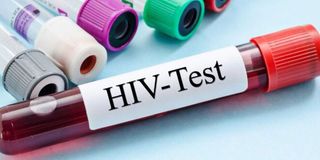East, northeast have lowest HIV prevalence, says report

According to the report, 1.4 million people are living with HIV in Uganda, while 1.3 million are on treatment. The the prevalence is higher among young women.
What you need to know:
- HIV/Aids estimates for last year which captured up to December, indicate that the eastern region and Karamoja sub-region recorded an HIV prevalence far lower than the national average of 5.3 percent.
Eastern and north-eastern regions have the lowest HIV/Aids prevalence, according to a new report.
The report was released by the Uganda Aids Commission (UAC) during an HIV/Aids awareness camp organised by UAC and the Judiciary at Jinja High Court on Friday last week,
According to the report, HIV/Aids estimates for last year, which captured up to December, indicate that the eastern region and Karamoja sub-region recorded an HIV prevalence far lower than the national average of 5.3 percent.
The report further indicates that Busoga Sub-region has 3.3 percent, Teso (3.6 percent), Bukedi (3.2 percent), Elgon (2.9 percent), West Nile (2.4 percent), and Karamoja (1.2 percent), while Central or South Buganda leads with 8.6 percent, followed by Kampala and Acholi sub-regions at 7.4 percent.
Other regions include Ankole (6.5 percent), Lango (6.4 percent), Central II or North Buganda (6.1 percent), Toro (5.2 percent), Kigezi (4.9 percent), and Bunyoro (4.5 percent).
However, while Busoga is among the regions with low HIV/Aids prevalence countrywide, Jinja and Namayingo districts have the highest prevalence than the national average, posting 5.7 percent and 5.5 percent.
Kalangala, Kyotera, Kabarole and Pader top the district’s rankings, according to the data, while Nabilatuk, Kabong, Kotido, Yumbe, and Pallisa have the least prevalence.
Ms Enid Wamani, the director for partnership at UAC, said if one district has a high prevalence, it will affect the whole country because “people are too mobile”.
She, however, attributed the variance of the prevalence in the regions to “risk factors” and “drivers of the epidemic”.
These include, among others, discordance and nondisclosure, multiple concurrent sexual partners, low condom use, transactional sex, and cross-generational sex.
“There are also factors where you have mobile men who have money and are long distance drivers; so, along the highway, you will find many of those hotspots,” she said.
Activists speak
Ms Eseri Nandutu, an HIV/Aids activist, said she has lived positively since 2005 and has not been discriminated against at the Court of Appeal where she works as an office attendant.
Maj (rtd) Rubaramira Ruranga, another HIV/Aids activist, said he will die of old age, but not Aids.
“My last born graduated from nursery school and I must live to see her through life. Most of the things that kill us are that we don’t have the spirit to live, but hiding a disease doesn’t stop it from being there,’’ he said.
“I have had Aids for 38 years, but do you see me as a sick man? Actually, others may be sicker than me,” he added.
HIV infection
According to the report, 1.4 million people are living with HIV in Uganda, while 1.3 million are on treatment. The the prevalence is higher among young women.
Ms Enid Wamani, the director for partnership at UAC, said more than 38 million people are living with HIV/Aids globally, and in one year alone, at least 1.5 million get infected globally. She added that in 2021, at least 650,000 people died of Aids-related diseases globally.





